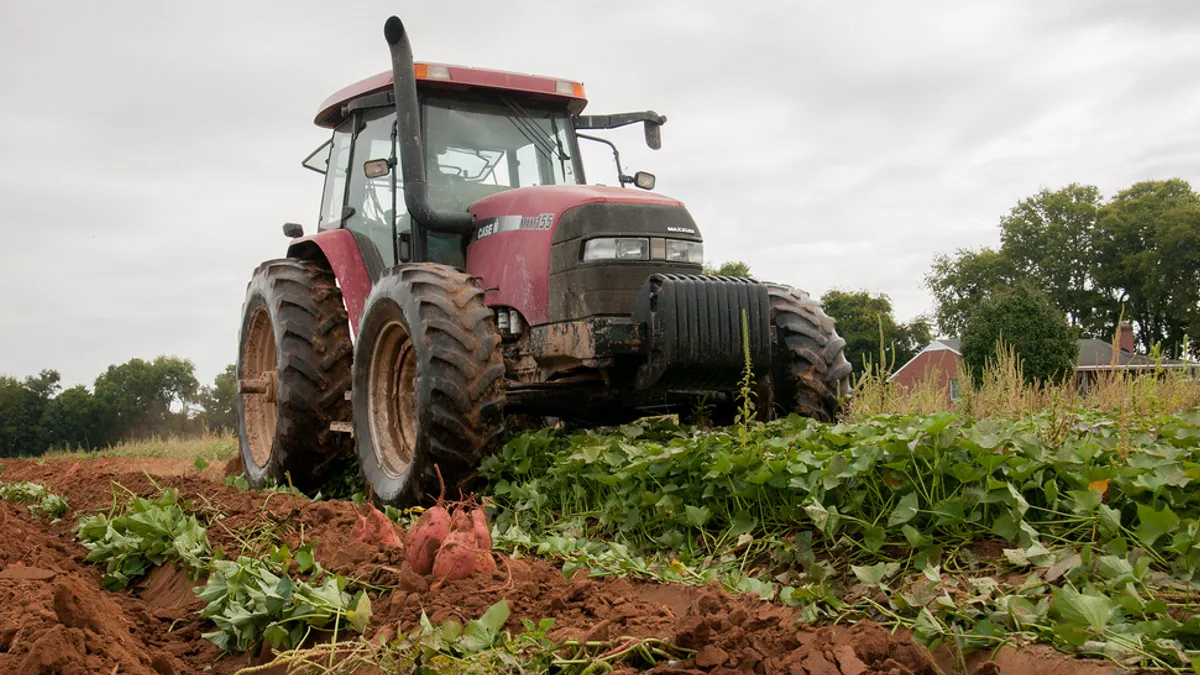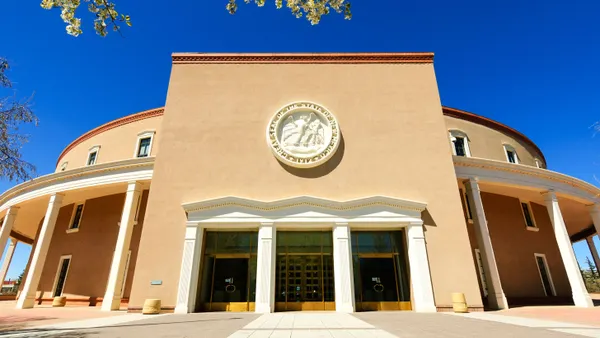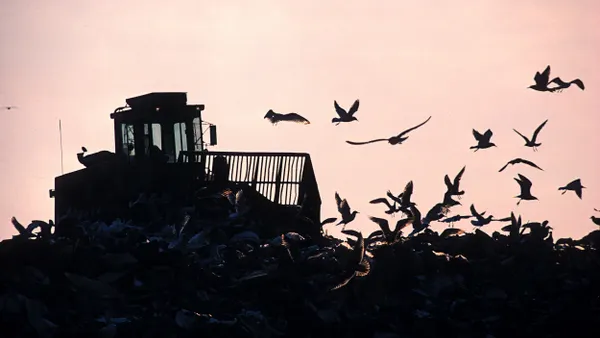Dive Brief:
- The American Farm Bureau Federation launched a "No Taste for Waste" campaign this week to increase consumer awareness of food waste. Partners include Land O’Lakes SUSTAIN, Valent BioSciences Corporation, FLM Harvest, the CropLife Foundation and Meredith Agrimedia.
- The campaign's goal is to highlight how some farmers reduce waste in their daily practices by donating excess food, using "cosmetically challenged" crops for other products or capturing energy with on-site digesters.
- Along with a "bookazine" called "Waste Less, Save Money!" that will be sold in grocery stores, the campaign's website also has resources for consumers. These resources include basic food waste statistics, recipes and meal planning tools.
Dive Insight:
The nonprofit ReFED estimates that about 10 million tons (or $15 billion worth) of food is wasted at the farm level each year. As with any type of waste, stopping it upstream at the source is seen as the most environmentally and economically beneficial approach.
Proposed solutions from ReFED include expanding temperature-controlled distribution infrastructure, improving donation supply chains, finding ways to utilize more "imperfect produce" and increasing capabilities for "value-added processing" into other products. All of these concepts rank high in terms of financial payback.
Attention around state-level donation tax incentives, date label standardization and food recovery infrastructure has increased in recent years. From an industry perspective, farm digestion capabilities may be the most intriguing angle. Ongoing research shows that these sites have big potential to handle more material. According to the Environmental Protection Agency's AgSTAR database, a large portion of the 265 active farm digesters also have co-digestion capabilities. While not all of those are set up to take food waste, multiple sites have found that can be a profitable way to maximize their existing infrastructure.
Figuring out how to expand that infrastructure can be complicated. In states with organics diversion mandates or other related policies in place, it's seen as easier to get the necessary investment because some amount of feedstock is guaranteed. Even if farms don't have the space or the resources available for a digester, it's still common to see on-site composting operations that also help build local processing capacity. They can also play an important role by sourcing wasted, but edible, food for animal feed.
This policy conversation continues to evolve at the state and regional level, but activating more federal resources is seen as the key to accelerating it. Proponents view the 2018 Farm Bill as their best shot to get this done. Groups such as the Harvard Food Law Policy Clinic have been actively working to highlight how this could all be accomplished legislatively, and recently spearheaded the launch of a new Farm Bill Law Enterprise in partnership with seven other schools. The group's new website includes numerous background reports and a legislative tracker.
With the current Farm Bill set to expire at the end of September, all eyes are on Congress to see whether it can reach consensus in a fraught mid-term election year. Ahead of that deadline, many groups are naturally working to advance their agendas on issues far broader than organics processing infrastructure. Though capitalizing on what has been described as rising consumer awareness around food waste now appears to be part of those efforts.











